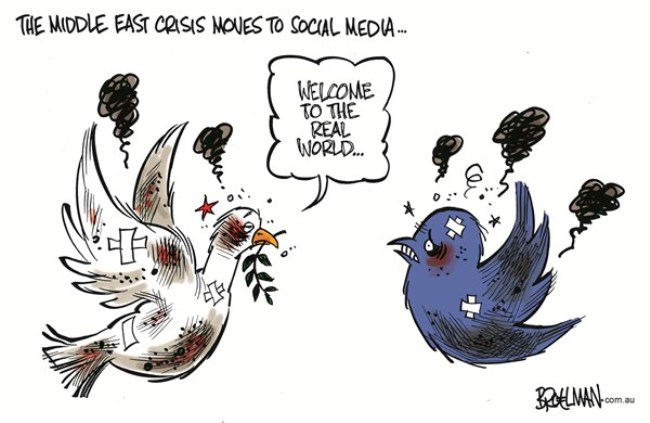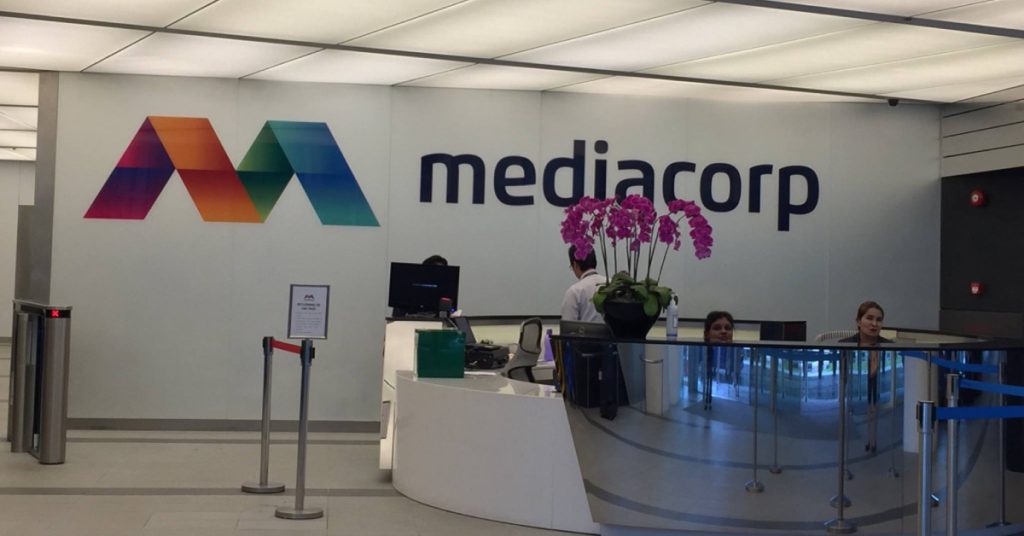From openly buying tweets of support to posting posters denouncing the Hamas fighters, the Israeli government has gone all out to paint a positive picture of its occupation over the Palestinian land of Gaza. More than just vilifying its enemy, the Jews have also used Twitter to post videos displaying the humane side of the Israeli military.
An example is a tweet by the Israel Defense Forces (IDF) below showing how the army called off an attack against an alleged Hamas member who was seen running towards and entering an ambulance. In the grainy, black and white video, the IDF personnel was heard as saying that “there’s no intention to target the ambulance”.
The Palestinians, although having an Internet penetration rate of about 58% as compared to Israel’s 70%, have also stepped up their game in the social media front. Muslim public figures such as Canadian activist and film-maker Mohammed Zeyara who is actively posting photos, memes and status updates as the latest Gaza occupation unfolds. Zeyara’s posts can garner over 80,000 ‘likes’ at a time.
Facebook page ‘Free-Gaza’ saw a 23.8% jump in the number of ‘likes’ ever since the two nations began firing missiles and rockets at each other last week. In Singapore, a Facebook page known as ‘From Singapore to Palestine‘ was set 74.8% increase in ‘likes’ in one week. Both pages give updates of Palestinian casualties.
It has been an intense social media battle between Israel and Palestine. From the information above, you could see the polarising views between the two parties. As the Palestinian people continue to push for its agenda of the IDF being inhumane for killing civilians, the Israelis on the other hand accuse Hamas of using the Gazans as ‘human shields’.
As a netizen and social media user, who should you trust? Who is showing, hiding or distorting the truth? The conflicting posts by either side of the conflict has made surfing Facebook or Twitter a tad too chaotic.
Also read: How Did This Twitter Account Predict The World Cup Finals Result So Accurately?
Away from the virtual war, the latest Israel-Gaza conflict has cost the lives of 258 Palestinians, most of them civilians, and 2 Israelis – a civilian and soldier each. The Jewish military has since operated a ground offensive which destroyed dozens of Hamas’ tunnels. No long-term cease-fire agreement has been reached.
Not short of controversies
One of the most prominent social media faux pas was when a picture showing a young Palestinian holding the posters ‘Free Gaza from Hamas’ and ‘Stop Hamas terrorism on Israel’ was proven to be doctored. This must surely be a painful (and embarrassing) lesson to the perpetrator.


The same slip-up happened to the Palestinian camp, albeit the error was how the images used were found by the BBC to be a few years old. The old photos were used as part of the #GazaUnderAttack movement. The video shows how the images were analysed was shared by rival campaign #IsraelUnderFire.
So What’s Next?
The recent Israeli-Gaza conflict may not be the first time opposing parties are using social media as a tool of propaganda and sympathy – this was also present during the Turkey and Syria unrest. Social media wars are not about who wins or lose; they are about shaping public opinion and creating movements for a cause.
Will virtual support help a country win a flesh and blood war? Of course not. The least it could do is to mount pressure on either or both parties to stop or for the believers, it propagates the call for and collects prayers for the innocent victims caught in the middle of a conflict.
Also read: Perez Hilton Fires A Shot At Controversial Malaysian Politician’s “Hitler” Tweet
















